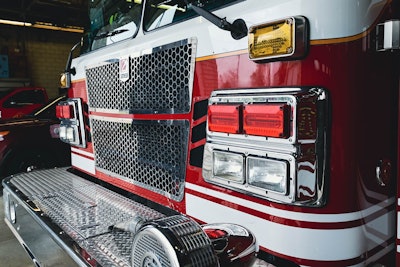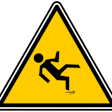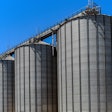
Grain bin entrapment incidents injure or kill dozens of people annually across the United States, establishing your relationship with first responders as a critical safety element. OSHA regulations specify that facilities cannot depend solely on 911 or standard emergency services as their rescue plan without confirming these teams possess appropriate equipment and grain entrapment training.
Successful grain entrapment rescues depend on well-trained teams equipped with specialized tools. Facilities must build partnerships that include regular tours, hazard education specific to grain handling and feed manufacturing operations, and hands-on rescue training. These relationships require clear utility location documentation, safety equipment demonstrations, and scheduled follow-up visits to maintain Emergency Action Plan effectiveness.
Lay the groundwork with a facility walkthrough
Effective partnerships with first responders start with detailed facility walkthroughs. These initial visits build familiarity that becomes crucial during emergencies, especially given the distinct challenges grain handling facilities present compared to standard industrial operations.
What to include in the initial facility tour
Fire officials need to understand your operation's structure and specific characteristics during their initial visit. The National Grain and Feed Association recommends focusing on identifying potential issues such as inadequate water supplies or barriers that could hamper emergency response. Provide site drawings, floor plans, access routes, egress paths and gas and electrical line locations.
Highlight structural and operational hazards that firefighters may encounter:
- Bin and floor openings, including passenger elevator and manlift shafts
- Roof and bin tops without safety rails
- Low overhead clearances that restrict firefighter movement with equipment
- Discrepancies between your emergency action plan and fire department protocols
Marking confined spaces and utility shut-offs
Grain handling facilities typically house multiple confined spaces requiring clear identification and marking. OSHA mandates that employers notify employees about permit-required confined spaces through danger signs or equivalent communication methods. These marking systems also help first responders rapidly locate hazardous areas during incidents.
Utility shut-offs play a critical role in facility emergencies. Gas, water main, water isolation valves, and other shut-off locations must be readily accessible to reduce damage and improve safety. Emergency situations often require immediate attention to these systems. Develop detailed utility location maps accessible to both staff and emergency personnel.
Discussing chemical storage and seasonal changes
Emergency responders require detailed information about chemical storage locations, including fumigants, propane, ammonia, gasoline, diesel fuel, and other hazardous materials. Seasonal variations also introduce hazards that responders must understand.
Cold weather shifts grain storage focus toward temperature control, while warm seasons present different grain condition challenges. Explain your facility's seasonal management approaches, since these affect emergency response procedures. Address seasonal staffing changes or operational modifications that could impact emergency situations.
Maintain open dialogue throughout the walkthrough and welcome questions. This initial tour creates the foundation for ongoing partnerships that protect your facility and the responders who may need to navigate it during emergencies.
Prepare for the worst with realistic training
Training programs that simulate actual grain entrapment scenarios serve as the foundation for effective emergency response.
Rescue training using grain cofferdams
Cofferdams function as protective barriers around entrapped victims, preventing additional grain flow while enabling safe grain removal from the protected area. These devices replace dangerous extraction methods—attempting to pull victims free can cause severe injuries including joint dislocation and paralysis—with controlled rescue procedures that protect both victims and responders.
Training options accommodate different facility budgets and requirements:
- Commercial rescue tubes designed specifically for grain entrapment scenarios
- Cost-effective alternatives constructed from plywood sheets, plastic barrels, or metal components
- Purpose-built training props like the cofferdams described by Mississippi State University Extension
Facilities operating under budget constraints can develop effective training tools using available materials. The National Education Center for Agricultural Safety (NECAS) provides training programs that focus on rapid response techniques using these devices.
Simulating bin cutting and grain removal
Bin cutting techniques become necessary when victim location proves difficult or time-sensitive. This procedure requires strategic cuts in bin walls to achieve controlled grain release. Training protocols address:
- Cut placement three rings below grain level
- Three evenly spaced cuts around bin circumference
- Avoidance of upright stiffeners or bolt joints
Proper execution releases approximately 5,000 bushels of grain—equivalent to five full trailer loads—under controlled conditions.
Training employees alongside first responders
Joint exercises between facility personnel and emergency teams establish operational protocols and command structures. Multi-agency training at facility locations develops clear communication channels and reduces emergency response delays.
Grain entrapment simulators provide realistic training environments for both employee groups. Training sessions address victim location methods, air monitoring protocols, and practical applications including patient assessment, stabilization, and removal procedures.
Strengthen communication and emergency planning
Communication protocols and documented procedures serve as the foundation for emergency preparedness in grain facilities. Physical training alone cannot address all emergency scenarios—written plans and established communication channels with first responders create the operational framework needed during critical incidents.
Developing a clear Emergency Action Plan
Your Emergency Action Plan (EAP) must comply with OSHA's grain handling facilities standard 29 CFR 1910.272(d), which requires written documentation kept at the workplace and available for employee review. At minimum, your EAP should include:
- Procedures for reporting emergencies
- Emergency evacuation routes and exit assignments
- Accounting for all employees after evacuation
- Rescue and medical duties for designated employees
- Preferred methods for reporting fires, explosions, and chemical releases
OSHA does not specify a particular notification method, but whatever alarm system you choose must be distinguishable and distinct. Employees in grain facilities may struggle to hear emergency alarms amid operational noise, making visual cues more effective. Color-coded floor plans that clearly show emergency escape routes help employees quickly determine their evacuation assignments.
Sharing maps and egress routes with responders
First responders require accurate facility information before emergencies occur. NGFA recommends layout drawings are considered the most important component of a fire department's written emergency plan. Provide responders with:
- Digital maps of your facility showing room labels and hallway names
- Locations of external doors and stairwell numbers
- Key utility locations and shut-off points
- High-resolution imagery of the entire campus
- Accurate labeling for parking areas and neighboring properties
Designating a facility liaison for emergencies
Establish a clear chain of command by appointing a primary emergency coordinator with authority to activate your emergency procedures. This coordinator should:
- Determine whether an emergency exists requiring plan activation
- Oversee emergency procedures
- Notify and coordinate with outside emergency services
- Direct shutdown of utilities or operations if necessary
Although not explicitly required by OSHA, providing a list of names with job titles of other company personnel who may need to be contacted during emergencies represents good practice. These individuals can provide additional details about their responsibilities and advise on further steps needed.
Keep the partnership alive long-term
Sustained relationships with emergency personnel require consistent attention and regular engagement. Grain facilities and first responder partnerships extend beyond initial meetings and training sessions through structured maintenance activities.
Why follow-up visits matter
Scheduled follow-up visits maintain familiarity with facility-specific hazards. NGFA notes "close cooperation between local fire officials, emergency agencies and facility management are an essential ingredient for a successful fire and emergency action plan". Equipment locations change, processes develop, and safety protocols evolve over time. Annual inspections enable first responders to update their knowledge of operational layouts, utility shut-offs, and chemical storage areas. These visits preserve emergency personnel familiarity with facility details that naturally diminish without regular reinforcement.
Involving new fire department recruits
Fire departments face regular personnel turnover, requiring introduction of new recruits to facility operations. Dedicated tours for newly hired firefighters should emphasize grain-specific hazards they likely haven't encountered previously. These introductions preserve institutional knowledge across first responder generations, particularly important since many departments don't have grain bin rescue experience.
Hosting joint drills and community events
Scheduled joint exercises strengthen partnerships through applied practice. Community safety days where first responders demonstrate grain rescue techniques alongside facility teams build public awareness while reinforcing working relationships.
Emergency preparedness at grain facilities extends beyond periodic meetings with local fire departments. Effective safety protocols require sustained collaboration between facility management and emergency response teams.
Establishing these connections before emergencies occur creates operational safety frameworks. The strategies outlined in this guide provide facilities with structured approaches to building effective emergency response partnerships. The investment in these relationships serves as essential protection for facility operations and personnel safety.
.jpg?auto=format%2Ccompress&crop=faces&fit=crop&h=48&q=70&w=48)


















